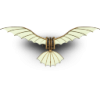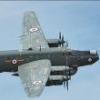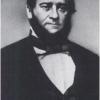Leaderboard
Popular Content
Showing content with the highest reputation on 17/03/17 in all areas
-
Good afternoon. I present to you my recently finished model: Manufacturer: Tamiya Scale: 1/48 Aircraft: Tamiya № 61035 1/48 Spitfire Mk.Vb (early) Markings: Spitfire Mk.Vb (early) W3257/FY-E, 611 Squadron, Flt/Lt Eric Lock, Hornchurch, Essex, july 1941 Aftermarket: Montex № K48202 Super Mask Spitfire Mk.Vb Tamiya Colors: - Gunze Sangyo H 72 Dark Earth Semi-Gloss/R.A.F. Aircraft WW II - Gunze Sangyo H 73 Dark Green Semi-Gloss/R.A.F. Aircraft WW II - Gunze Sangyo H 74 Sky (Duck Egg Green) Semi-Gloss/R.A.F. Aircraft WW II Biography of the pilot: Eric Stanley Lock born on Bomere Farm, in the village of Bayston Hill, outside Shrewsbury in 1919, Lock was educated at the Public Elementary School in Bayston Hill (1924–1926), at Clivedon School in Church Stretton (1926–1928), at Shrewsbury Boys High School (1928–1929), and finally at Prestfelde School in Shrewsbury (1929–1933). After leaving school, he was employed on the family farm, Allfield, and in Bayston Quarry until 1939. Developing a love for motor vehicles, motor cycles and flying as a teenager, Lock joined the Royal Air Force Volunteer Reserve as an AC2 Airman u/t Pilot (No. 745051) on 17 February 1939, and was promoted to Sergeant the following day. He undertook his initial peacetime training mostly on weekends and some week nights with 28 Elementary and Reserve Flying Training School (No. 28 E&RFTS) run by the company 'Reid & Sigrist' at Meir, outside Stoke-on-Trent and made his first solo flight within the month. No. 28 E&RFTS was disbanded on 31 August 1939 and Lock was mobilized the following day, but immediately sent on leave with full pay until 29 October 1939. His wartime training commenced on 30 October 1939 when he was posted to Course 1, 4 Initial Training Wing (No. 4 ITW) at Bexhill-on-Sea. He graduated on 8 December 1939 and was posted the following day to Course 17, 6 Service Flying Training School (No. 6 SFTS) at RAF Little Rissington. Lock was awarded by pilot badge ('Wings') in March 1940, but he did not graduate the course until 18 June 1940, and was granted a commission (No. 81642) the same day. He was immediately posted to No. 41 Squadron RAF, then based at RAF Catterick in Yorkshire. By the time of his arrival on the Squadron, Lock had not flown a single hour in a Spitfire and his first solo in the type took place on 21 June 1940. He spent the ensuing six weeks learning to fly the aircraft and consequently did not make his first operational sortie until 9 August 1940. In time, Lock became the RAF's most successful Allied pilot during the Battle of Britain, shooting down 21 German aircraft and sharing in the destruction of one. After the Battle of Britain Lock served on the Channel Front, flying offensive sweeps over France. Lock went on to bring his overall total to 26 aerial victories, one shared destroyed and eight probable in 25 weeks of operational sorties over a one-year period—during which time he was hospitalised for six months.Included in his victory total were 20 German fighter aircraft, 18 of them Messerschmitt Bf 109s. In mid-1941 Lock was promoted to the rank of Flight Lieutenant. Lock earned the nickname "Sawn Off Lockie", because of his extremely short stature. Within less than six months of becoming one of the most famous RAF pilots in the country, he crash–landed in the English Channel after his Supermarine Spitfire was damaged by ground–fire. Lock was posted missing in action.23 points
-
My wife bought me a new camera so I decided to take some pics of one I finished a few months ago built OOB except for the belts and the decals and painted with Bombshell Brew paints.15 points
-
Hi Guys Here is my latest completed model, I thought it would be a 'quickish' build and paint, but it took a little longer, I will add some more detail and a few pictures to look out for a few trips and snags, not all kit related there were some of my own. The kit is good but I found a few little niggles that I could have done without, or the manufacturer could have taken a little more care. Would I build another....YES but would certainly do a few things differently. Straight out the box, and painted mainly with Vallejo Acrylic 'Metal Color' cheers Ali The tail plane is not shown very leerily on the instructions as to what is top side and what is bottom side, I eventually with totally smooth elevator on the TOP side, I think it is correct. I think that there should be a few extra lumps and bumps (control horns) but I did not add these. When decals are applied for this scheme, there are two separate decals that fit the side that has the additional detail (on the bottom of my kit) but the one for the top is supplied in full length, when that is applied to the kit it is fractionally too short, so I had to make a quick slit through the decal while it was applied so I could get it to fit correctly. Additional pictures and some guide lines and things to look out for when building the kit. If doing this scheme the black strips for under the wing do not quite fit. The decal gives a cut out for the pylon be placed within, if that is done then the decal will not fit between, the flap and the aileron area, so I positioned the cut out correctly for the pylon, but then had to add small additional black strips just inboard of the aileron, look carefully at the picture, and you will see a faint joint line in the decals. The undercarriage doors on the front wheel bay are not shown clearly on the instructions, in one picture (15) they are shown with the cut out areas at the back, this is correct next stage 16 shown at front, it is just confusing. Also I would try and think of making a small modification to allow for a more positive attachment of the doors, when all painted up it is quite tricky to get the wheel assembly and the doors securely in place. Great care needs to be taken on getting all the decals correct on the fuselage, the black decals and the 'roundels' I found that it quite tricky to get the cockpit to fit correctly and the instrument panel is very week in the narrow areas, and I broke mine a few times. Some of the fit may have been down to me, but I would advise that you take care and possibly have a trial run before it is all painted. I painted most of the parts individually and then tried to assemble and fit, next time I would do more of a dry run fit first. Note the sliding canopy does not have any 'metal frame work' on the front edge Note these are the parts for the intake, well as can be seen above and below the 'turbine face' is JUST too large to go at the end as they would have you assemble so I shortened the pipe as shown. As can be seen there are even small slots there in the tube for the turbine face to clip into, makes you wonder??? I am not 100% sure what this clear lens is to be honest BUT I could not get it to look right by just painting the inside face, so i coloured the small dot in the middle as shown and then added a piece of plastic card with some chrome foil on behind the lens, see picture a few above, I think it worked quite well. The area for the landing lights does not have any backing, so I added a small piece of card to block that in. The exhaust is not great, so I replaced the kit parts with a one piece tube. A few general notes and things to be aware of or to look out for. There are some areas where the rivets, have gone altogether, especially top and bottom of mid to rear fuselage, also some have been stretched, I did some repairs to these but if you really want a much improved model you will need to spend time on these to make these a lot better. The main undercarriage doors should also have some rivet detail added, they are very bare compared to the rest of the kit, and it show's, I will add them next time round. I found the 'coloured' decals quite thick and they needed warm water to remove them from decal paper but once on the model they were quite difficult to move and certainly needed a strong deca solution to bed down onto the detailed rivet surface, I use the DACO strong decal solution. I was tempted to spray the black areas, but then went with the decals, I thought these maybe tricky to apply BUT they are more pliable that the colour decals, but they need to handled with care, and as mentioned earlier the alignment of six black decals and the roundels on the fuselage is tricky. I found a very good sight with amazing pictures that are really good, and inspirational, you can see all the rivet and marking details and panel colour variations. here is the link http://www.jn-photo.se/Browse-my-images/By-Type/SAAB/SAAB-J29F-Tunnan/i-jw8Kt24/X3 Hope all this helps, cheers Ali12 points
-
Lá Fhéile Pádraig from a blustery West Britmodellers! Dark, grey, and a storm-warning in progress so no guilty instincts about generally having a lazy family day today. My youthful era of piling down to the bar on Paddy's Day at lunchtime and staying until chucking out /being chucked out time are long gone; I'd probably be asnooze in the corner after a couple of lunchtime pints nowadays. Strangely my ability to drink wine until 4am hasn't been affected to the same degree - I offer myself to medical science as a test subject....) Movie (We Were Soldiers Once, and Young), snacks and bevvies are layed-in for later but for the present, coffee and correspondence whilst a Sou'Wester howls outside... This is my first time doing it to to such a large degree Cookie but I have to say it is a most amenable process. I too have suffered from the Curse of the Vanishing Filler in the past; in this case I only wet-sanded off about 80-90% of what I actually wanted to remove, leaving the last 10% or so to do via dry-sanding, which is fare more controllable. Even so I came back and thinned this down some more with a quick wet/dry session earlier: Much better now. I also remembered to scrape the window insets open again using the point of a compass. Merci Ced. That kebab van sound great: I am an incorrigible fan of punning shop names I'm afraid. As to stereotypes, well as a Sarf Lundun boy myself by birf, but then having a spent a gurt part of my childhood in that there Zummerzet, my references is now well confused my old son.... A fella could have a good weekend away in Vegas with that lot... Which is the twin motor version hendie and tell me why I need it so that I can tell Mrs.B. Go raibh maith agat Rob. Top marks for PPP when you go in wet. Whilst cleaning excess putty off of the outside of the fuselage, I decided that in order to avoid scraping the window during sanding later, I'd knock back some of the raised panel lines whilstI was in that region so-to-speak: Wet-sanded w/ 2500 grit again, using a varying pressure all over in order to avoid the net result looking too contrived when painted. As discussed earlier in the thread, I think this 'calming' of the existing panel lines will be quite useful in representing the surface textures of the real aircraft. I have made sure to leave certain areas more pronounced - like the join of the wing-root you can see above - and also left a little of the excess putty to give an irregular textural variation to the panel lines as well. We'll see how that approach performs later of course in the painting stage... She sits now with a waft of Halford's éminence grise to check for levels: That will do for the preparatory stage I think. The next task is of course to start on framing those walls, a procedure that doesn't fill me with as much dread as I first anticipated. 'Let me', as the great Simon Munnery might say 'explain'...in this case with the aid of acouple of Mike Costello's excellent shots from the walkaround section on the forum. For'ard: Rearwards: From the above you can see that there are essentially two main horizontal runs (plus a bar along the centre), whilst the vertical divisions are at regular intervals and seemingly of uniform height, bar one or two at the end. The idea at this stage is to add the horzontal runs first, measured at set intervals for the vertical ribs and cut half-through to provide secure joins for the ribs (which will also be cut half-through at intervals to match the horizonal ribs). This procedure should (I hope!) give both a secure and accurate way of locating these components on the fuselage in relation to one another. The vertical ribs will also need drilling out to accommodate the cable various cable runs. Whilst there are a lot of ribs, the uniformity of size should mean that I can batch-manufacture these, and join them together temporarily forcutting slots and drilling cable runs....in theory anyway. This stage needs some careful sequencing due to the interaction of that framework with the floor and ceiling however. I mentioned earlier in the thread I think that my plan is to construct the floor and associated structures on a 'raft' that can be slid into the interior once it is closed-up. This not only hides the bottom seam of the fuselage neatly from view, but is in fact little different from the way the the recovery platforms etc. was overlaid onto the existing flooring of the 'J' variant for these mission, essentially a steel and plywood framework with an anti-skid surface. So, I need to cut out a shape for the floor first. More on that anon... Tony12 points
-
I decided to salvage this Buccaneer S1 that I originally built 30+ years ago - it was based on the Matchbox Buccaneer S2 and used bits of the Airfix NA39 kit to convert it to an S1 - over the years the finish acquired a grimy grey coat and then had an unfortunate handling accident and was stuck away for future repair. The motivation to start the repair came after viewing the excellent Buccaneer S1 & S2 models in 1/48 & 1/72 on BM, in particular the S1 by CT Modeller and the comprehensive build by Navy Bird of the Scale Resin S1 - fortunately I had not lost any of the parts - you can see where I started cleaning the grimy coat on LH side of model. Photos are the best I could do on my iPhone. I decided to retain the scratch built parts, those being the folded nose, cockpit/ejection seats, wing folds, air brakes and various airframe mods - The grime was removed and after fixing the broken bits and reassembling it I repainted the model with Tamiya acrylic white - I always struggle with white finishes but eventually managed to get a white finish I was happy with - I then sprayed the model with Humbrol Clear prior to decaling - this was a bit of a disaster as the whole models finish crazed for some unknown reason and I spent another week rubbing it back and then recoating it using Microscale clear gloss thankfully without any issues. The decal sheet used is from Model Alliance Ark Royal Air Wing selection. I also added a master pitot tube and a Flightpath etched boarding ladder set which I found a nightmare to put together & it almost did not make it on to the model - the jury struts are made from brass wire and fine brass tubing. I have a Scale Resin S1 to do at some stage and will refer to Navy Birds post when I eventually get around to making it - for now I am sizing up the Trumpeter Wyvern in 1/48. In my display case with my Highplanes Sea Vixen I have added references below I have collected over the years on interior surface colour - I acknowledge there has been much discussion on BM on what the colours should be After looking at TC2324's excellent 12 Squadron low level Buccaneer post I decided to give this one a gentle scrub and a couple of coats of gloss clear on the sea - the model is the Tamiya 1/100 scale Buccaneer S2 which is a really nice little kit and as far as I can tell no longer available? thanks for looking CJP11 points
-
Hi, here the new Airfix Ju 87 B-1 in 1:48. I add some PE parts by Eduard and used Gunze acrylics for painting.9 points
-
Hello, some pics of an older project WIP scratchbuilt Dingo Mk. III the whole bunch Shermans are heiser, carrier and 6pdr. from Artitec, Willys is Roco in Belgium 1944 i know it was a Humber Scoutcar in the movie, call it "artistic freedom" happy modelling and have a nice weekend Cheers Macki9 points
-
Well two Mirage IIIE and a VPA3 to be more accurate with the Agave nose of the latter in my opinion providing the ultimate in Mirage style. The models are based on two slightly different 1/48 Italeri (ex-ESCI) Dassault Mirage IIIE kits. No.2634 which was for a time the standard boxing with decals for four French examples along with one each from, Spain, Switzerland and Australia and No. 2674 a special release marking thirty years in French service with decals for nine options along with an additional sprue with parts for the Martel AS 37 ARM and RP30 1700 Litre drop tanks. Some parts such as the AIM-9 Sidewinder really show their age and others such as the very shallow jet exhausts need some work and spare parts/plastic tubing to deepen them. My aim was to model one in the early form of higher-visibility yellow edged markings and the other in the later toned-down form but to build both as near enough from the box as was possible with some slight changes to aerial fit and the extended jet pipes as mentioned. For the French examples the only after-market addition was the AN-52 Nuclear Weapon from Belcher Bits however for The Pakistani Mirage VPA3 with Agave Radar Nose built for a magazine article the build was a bit more complicated. Contrasting styles of French high and low visibility markings Mirage IIIE from Esc.03/003 'La Fayette' with an AN52 on the centreline was completed in the earlier higher-visibility form of the markings which required a little change to the kit decals to provide a suitable serial and sourcing a second PHIMAT. Mirage IIIE from ESC 02/003 'Champagne' with Martel ARM on the centreline was completed in the later lower visibility form of markings. Pakistan Air Force Mirage VPA3 from No.8 ‘Haider’ Squadron was converted by using an adapted form of Eagle Design’s resin set CK-19 for the Peruvian Mirage 5P4 providing a new nose, cockpit and jet pipe. The Exocet ASM came from the Airfix Super Etendard along with the carrying pylon which was extended and re-shaped to resemble that used on the Mirage and the AIM-9P were from an Esci F-4. National markings came from a Bright Star sheet while the unit tail badge was photo-shopped from an internet image of the squadron crest and home-printed.8 points
-
Hi guys here is my Hasegawa F-16 from the Royal Netherlands Airforce as it participated in the NATO Tigermeet held at Fairford in 1991. I have build it for the F-16 STGB here at Britmodeller. Hope you like it. NATO Tigermeet 1991 Fairford UK F-16A Royal Netherlands Airforce 313 squadron Hasegawa 1/48 kit with Quickboost ejection seat, wheel doors, Aires exhaust nozzle, and from Master the pitot tube, AOA probes and static dischargers. Build thread can be found here Erik7 points
-
Hello, this is a model from two years ago. A nice little kit, no extras needed has its own photo-etched and resin parts. Opened the bomb bay and crew entrance door. Scratch built the interior, all guns, wheel bay and engine details. Any comments are most welcome. Thank you, hope you like it!7 points
-
Recent arthritic finger problems have had an impact on modelling and many other things of late. They sometimes seize up or grip just goes occasionally without warning. Anything that has been attempted of late has ended in disaster. A recent Swordfish which took a while and was ready for rigging fell from my grasp with nasty results. So after laying off any builds I had a go at this one which again took longer than what most people can do. Just a build to keep the mojo going and trying not to let the finger problems get the better of me. Upper surfaces was a bit of my own mix as well as the lowers (FS police won't stop me sleeping at night). Had a bit of a paint reaction on the underside for some reason but hopefully the patch up is hardly noticeable. It also crept onto the upper so the trailing edge of the starboard wing looks a little paler than the rest. Canopy framing looks better in the flesh. I have a spare so may replace this later. (Actually just noticed in the phots I've left some slivers of masking tape in places). Anyway, here it is.6 points
-
Not having done much to this build for a while, I got the urge to get stuck into it again the other day. I decided to start with the ram air turbine. Big mistake! This little fellow is smaller than my little finger nail and that is including the door! A sensible modeller would have set this aside until he had got his teeth properly back into the project, an even more sensible modeller would never have opened the RAT bay in the first place! Not this Martian though, oh no! He plods on wrestling with unfeasibly tiny pieces of sprue Albion Alloys tubing and plastic card until he has both his assembly and a stinker of a headache into the bargain. Still, Longshanks did order me to lose the sensible hat the other day so in a way its his fault really! Unbelievably though, the carpet monster never got his hands on a single bit of it, although he may of course, be waiting to swallow the thing whole. The sooner this tiny thing is in my parts box the better. I always have a small box or tray for each project that I can keep small subassemblies such as this safe in. On to the pictures and hopefully the forensic ruler will give you some idea of the size. I'm off to lay down in a dark room and then do something a bit easier on the build. I don't know what it will be yet but it has to be easier whatever it is! Thanks for looking Martian6 points
-
thank you my friends that is a high compliment indeed Ced - that is a real airframe not my model! a little bit more... I assembled the heelboards to the bulkhead frame.. ..and made up a sort of trunnion thing from watch parts for the base of the control column - I can't find many shots of this area so it is imagineered.. ..removed the pipework from the column so I could work on making a fitting for it and paint it.. ,,made a little box widget thing that sits between the rudder pedals on the heelboard structure.. ..and checked it all slotted together still.. ..going to check I can fit it from the bottom into the 'pod' and paint it next... TTFN Peter6 points
-
I have finally got last weekend's photos loaded. Wing construction started with some careful bending of the ribs That was done mainly with flat jawed pliers and where space was really tight with fine pointed tweezers. By the end of work on Sunday one wing was virtually finished with the other one not too far behind: I've just got to add the drag rudders and a few more bits and pieces and then the wings can be fitted and this will then be complete. I should get this finished tomorrow. Until then bye, Nigel6 points
-
Hello All, Bomb sight time. Plastic strip and a section from the Airfix Thunderbolt seat peg: Seen painted and mounted with the cowling, engines and propellers. The cowlings need the burnt metal painting on the exhaust ring and the the propellers have some counterweights added from slices of plastic rod: I didn't try to correct the blade shape - it should narrow and round off as it approaches the hub. A view over the bomb aimer's shoulder showing how the sight lined up with a marker on the vertical stick and a marker on the horizontal stick. You set up the markers, taking into account altitude, speed, crosswind, bomb terminal velocity, and then all you have to do is watch the target creep under the sight up to the markers, keeping it all straight and level and on course until it's time to press the button. Simple eh? Regards, Adrian6 points
-
I'll do my best to take it to Telford, Joseph - by then I'm hoping to have all of the structural work done and it will hopefully resemble a Shackelton. It may even be on its wheels! I must confess that the Brabazon doesn't really 'float my boat'; if I do another scratch-build after this I'm leaning towards a 1/32nd TSR2. However, something easier may be in order, such as a vac 1/32nd Short Sunderland which I have in the stash ready, with all detail parts ready to go. I'm going to need to have along lay down in a dark room after this one though... Tom6 points
-
If I may suggest an approach for the future... BEFORE you join the fuselage halves, cut the slots out all the way through using smalls drills, scalpels, files, whatever. Then, to stop the seethrough look, cover the inside of the hole with a piece of thin plasticard. Et voila, no need to try to chisel out the bottom of a tiny hole to make it flat. That's how I'd do it, if I ever did it. (Hindsight is always perfect, innit?)6 points
-
Hi, in 2013/2014 I showed these models: 1956 Austin Healey 100-Six http://www.britmodeller.com/forums/index.php?/topic/234951445-1956-austin-healey-100-six/ Scratch Built 1/24(!) 1976 Harley-Davidson Super Glide 1200 FXE http://www.britmodeller.com/forums/index.php?/topic/234951937-scratch-built-124-1976-harley-davidson-super-glide-1200-fxe/ 1907 Fiat F-2 130HP Grand Prix Racer 1/20 http://www.britmodeller.com/forums/index.php?/topic/234952276-1907-fiat-f-2-130hp-grand-prix-racer-120/ 1970 GMC 9500 (AITM resin cab) with Tube Trailer (scratch built) http://www.britmodeller.com/forums/index.php?/topic/234953245-1970-gmc-9500-aitm-resin-cab-with-tube-trailer-scratch-built/ 1937 Bugatti 57SC Atlantic http://www.britmodeller.com/forums/index.php?/topic/234954092-1937-bugatti-57sc-atlantic/ Maserati 250F – GP Champion 1957 http://www.britmodeller.com/forums/index.php?/topic/234955027-maserati-250f-gp-champion-1957/ Scratch Built 1937 Mercedes-Benz L 10000 Heavy Truck http://www.britmodeller.com/forums/index.php?/topic/234955774-scratch-built-1937-mercedes-benz-l-10000-heavy-truck/ 1910 Garrett & Sons Steam Road Tractor „Pendle Princess“ http://www.britmodeller.com/forums/index.php?/topic/234956639-1919-garrett-sons-steam-road-tractor-pendle-princess/ 1929 Mercedes-Benz SSKL – 1/25 Conversion http://www.britmodeller.com/forums/index.php?/topic/234957462-1929-mercedes-benz-sskl-125-conversion/ 1948 Ford F-8 Medium Truck Milk Tanker http://www.britmodeller.com/forums/index.php?/topic/234958293-1948-ford-f-8-medium-truck-milk-tanker/ 1972 Ford Capri Mk I RS 2600 http://www.britmodeller.com/forums/index.php?/topic/234959207-1973-ford-capri-mk-i-rs-2600/ Auto Union Typ C – Grand Prix Champion 1936/Streamline Avus Car 1937 http://www.britmodeller.com/forums/index.php?/topic/234960037-auto-union-typ-c-gp-champion-1936-streamline-avus-car-1937/ 1952 Jaguar XK 120 OTS http://www.britmodeller.com/forums/index.php?/topic/234960886-1952-jaguar-xk-120-ots/ 1962 Ferrari 250 GTO http://www.britmodeller.com/forums/index.php?/topic/234961629-1962-ferrari-250-gto/ 1957 Mercedes-Benz 300SL Roadster http://www.britmodeller.com/forums/index.php?/topic/234962414-1957-mercedes-benz-300sl-roadster/ 1927 Bugatti 35B http://www.britmodeller.com/forums/index.php?/topic/234963107-1927-bugatti-35b/ 1950 Krupp Titan & Hanomag Trailer http://www.britmodeller.com/forums/index.php?/topic/234963865-1950-krupp-titan-hanomag-trailer/ 1961 Ferrari 156 „Sharknose“ The Phil Hill/von Trips F1 Championship Car http://www.britmodeller.com/forums/index.php?/topic/234964547-1961-ferrari-156-sharknose-the-phil-hillvon-trips-f1-championship-car/ 1959 Jaguar Mk II 3.8 Saloon http://www.britmodeller.com/forums/index.php?/topic/234965259-1959-jaguar-mk-ii-38-saloon/ I would like to resume posting with a model of (probably in most people's oppinion) the British car. Maybe 20 years ago Gunze Sangyo produced two versions of the same 1/24 car kits: The first line was rather expensive. These kits were labeled “Gunze Sangyo High Tech Model”. They included PE wire wheels (if the 1:1 vehicle had wires), a lot of other PE parts and many pewter parts not only for the engine and for the chassis but also for the exterior chrome parts (f. e. bumpers, door handles). The second line were inexpensive all-plastic curbside versions of these “High Tech” kits. They came without pewter parts and without PE parts. The PE wires were replaced by plastic spoke wheels. I bought only one “High Tech Model”, namely this E-Type. If my memory serves me well it was the most expensive 1/24 plastic kit in those days, so my expectations were rather high. But as the proverb says strong light casts deep shadow: To this day this kit makes the most convincing 1/24 or 1/25 E-Type by far, and the PE wires are the best wires that I know. Some of the numerous PE parts made sense but the benefit of most of them was doubtful. The extensive use of pewter parts made no sense to me. Compared with plastic parts they have no additional benefit but work becomes very laborious. IMO a really annoying set-back was the use of pewter also for the exterior chrome parts (f. e. bumpers, door handles). It was extremely time-consuming giving them a smooth chrome-like appearance. Even worse my clear coat didn’t prevent these parts from darkening over the years. Fortunately I was still able to find a plastic version, so I replaced all those darkened exterior pewter parts of my model by nice chromed styrene parts. Taking the high price of the High Tech version into account, I was rather annoyed despite the outstanding wheels. Overall IMO the all-plastic kit would have been the better choice. With some improvements, particularly with better wires, it could have made a similarly nice model at a reasonable price. Nevertheless I found the finished model convincing, and it is still standing in the first row of my display cabinet.5 points
-
Hi folks, My first completion for 2017 - rather a slow start to the year - is this space fighter from Yamato 2199. It's a Bandai kit and has the usual excellent fit and sharp detail, as well as the usual tricky plastic that doesn't like CA or enamels I didn't have too many problems that weren't of my own making though - just need to be very careful with it all. (click for bigger/more) I modified the snap-fit areas to allow me to build the nose and fuselage separately, deal with the horizontal seams, and paint them before bringing them together at the end. This was inspired by pictures of Japanese magazines and seems like a good way to approach these kits. It also cuts down on the number of snapped-together joints which are where plastic can crack under the influence of solvents. It's quite a mean-looking thing, I think: I think the best bit was weathering the engine cone, which is almost entirely done with acrylics to avoid any risk. I enjoyed painting the pilot too, but I think she might be 1/100 rather than 1/72, as she looks rather low in the seat! Thanks to everyone who looked in on the WIP thread! Cheers, Will5 points
-
Following efforts to tidy the Martian Cave, I have added the airbrakes under the wings, these were right pigs to clean up, glued the pilot's seat in place and added the tail wheel's mudguard, this was also hard to thin down. For want of any other German bombs, I have also begun cleaning up the kit items. I have absolutely no idea what sort of bombs the Spanish Air Force used but the kit items will look better than empty racks. They will also be more in keeping with the spirit of the build than just throwing some money at the problem. I have cleaned up the control column the gunners seat and the kit guns and having masked the cockpit area off, shot some primer at the lot. Prior to priming, the seats had small slits cut in them to accept the Eduard seat belts. The transparencies have all had a couple of coats of Klear to improve clarity. I think I will try and knock the undercarriage on the head this evening. Still to come though, is the tedious but necessary task of thinning the undercarriage doors. May not get them done tonight though as I am pretty whacked after some micro shenanigans on my CF-104D Starfighter build. Thanks for looking Martian5 points
-
I managed quite a bit of main rotor gear linkages today and will probably do a bit more after The Last Kingdom The two main sections of MRG alongside a tail whizzy thing off something else, there's always something else to break the concentration isnt there? Ah that's better here against the real thing The control rods are being sized and connected tonight, I'll show them when they are ready for paint, there are a couple of extra counterbalance type weights to add between the top cruciform and the lower one so that's the next stage You can just make them out next to the rotor shaft More fun coming next time5 points
-
The PPP route worked pretty well in the end Keith. Pictures below.... Thanks hendie. I now realize that there was a hole in my life that is the exact shape of a bead lathe. Top-level discussions will commence this weekend with Mrs. B on the matter... That's just too elegant a solution for me Miggers. I've plumped for slathering the blighter in PPP: After trying and discarding various tools, it was easiest just to apply the PPP with your fingers, rubbing it in like you would suntan lotion into Felicity Kendall's back, before adjusting your medallion and lighting a cheroot. Wait. That was out loud, wasn't it? Look into the Boxcar Miggers. The Boxcar has you in it's thrall.... After getting back from work this evening and treating everyone to a guilty kebab supper from the new takeaway that's opened in the village (actually it's the only takeaway in the village, but they make their own flatbreads), a vigorous wet sanding for the Box (oi, behave!): 2500 grit, and about 15 minutes work on each side to reach this stage. Yes it leaves the window openings all mucky and needing tidying up later, but imo is an easier and more controllable process, given that the main concern here is obviously to ensure a regular profile on both sides so that we don't end up with unsightly and variable gaps when we come to start adding the framework. Oh dear. I've started saying 'we'. Is that a sign of pretentiousness or incipient stability issues? Once that had dried off over the stove, a further 10 minutes a side dry sanding this time and we/I end up with this: All birr-gouges now made good, and a squint of scrutiny down the tunnel in oblique light reveals a pleasing regularity has resulted: Clean out those portholes and a snort of primer on that tomorrow I reckon. You might have noted in the news that our Stuffed Shirt of a Taoiseach was sucking-up to the Bilious Tangerine in Washington today on account of it being Paddy's Day tomorrow. As a feckless public servant I therefore have the day off and hope to celebrate through the medium of plastic. Conversing with Navy Bird over on his magnificent Canberra build earlier I was delighted to find a fellow devotee of King Crimson, consequently I am seized now with a sudden desire for complex time signatures and guitar phrasing... 'Cigarettes, ice-creams.Figurines of the Virgin Mary...' Tony5 points
-
thank you chaps great to see some discussion and please forgive me if I post in reply shortly in the meantime, I wanted to add the latest update and a bit more Spitfire mayhem.. the rudder pedals are fixed to big torque tubes that go through a frame (9 I think) which is an open braced structure like this... I started with a brass square section and again some of the PE bits I designed before I started.. ..there is also a control arm that joins both the tubes / pedal sets together under the instrument panel.. ..the heelboards are another structure that starts to link this assembly together, so more square tube assembled on a sheet of tape on perspex.. ..with the heelboards and some of the detail added.. ..and the whole assembly starts to form - its all a bit wonky as its only resting together.. ..theory is this will all then be mounted to the open bottom of the cockpit 'pod'.. we shall see... TTFN Peter5 points
-
I know I'm a bit late getting this off the ground, just over 3 weeks to go but I've been plugging away at it & progress is accelerating, sort of, I hope. This is the aircraft I'm modelling, no shortage of reference pics in this case. I'm using the Two Bobs, Blizzard Bad Guys sheet, which has marking for 86-269, which, with some jiggery pokery, I'm aiming to turn the 6 into a 9. It'll only be the Pilots name under the cockpit missing but in 1/72 I can live with that, Sorry Major Halverson. Anyway, 1stly of course, sprue pics. Missing are the 2 Hasegawa weapons sets I needed to do the specialied sensors these aircraft flew with. I have them now though. Cockpit done, I'll be doing it with the canopy closed so this will do. Some detail painting done & a couple of the sub assemblies in progress, this was several days ago so more has been done since. I'm still waiting to see if I need weight forward to prevent tail sitting as per my post in the chat thread, I'm beginning to think not trying some test balances about the main U/C point but there is more to go on yet including things under wings. Steve.4 points
-
Greetings all, This is the Welsh Models 1/144 MD-11 vacform with Delta Airlines late 1990's livery laser decals by 26decals. Build thread here. Relatively straightforward, though the build up of the wing mounted engines from bits of vacform and resin was tedious and slow work. Because the decals are laser printed on clear film, the Delta writing on the centre engine is clear and results in a very large blue decal to wrap around the centre engine. My first attempt didn't go well, so a huge thanks to Ray at 26decals for supplying a replacement set. Paints were my usual Zero Paints white primer, Zero brilliant white top coat and various Alclad shades. Clear coating with Alclad Aqua Gloss with a wide flat brush. Despite not turning out quite as good as I hoped, it certainly looks the part alongside my Delta TriStar. I just need a decent DC-10 kit - Authentic Airliners have been out of stock for months now... On with the photos. Regards, Darren4 points
-
If there would be an award for "The worst kits ever produced", the Eastern Express IL-96M / T would win this price miles ahead of any other competitor... I am used to the "not so easy" kits as I build a lot of yesteryear kits.But Eastern Express' offering makes even Plasticart kits look like state of the art. Not one single piece had a decent fit let alone a seriously warped fuselage that was not only warped,it had also a different diameter in the back end which resulted in tremendous use of putty and hours of sanding sessions. I worked on and off this kit since early 2016 and finally managed to get it through my production line last weekend.Seeing this airliner now done is a big reliev. Paints used for this build are Revell gloss white 04 for the fuselage upper half,Revell grey 374 for the lower part and the wings and Testors silver for the leading edges.All applied with my airbrush. Sealed with Revell 01 gloss clear. The decal set comes from a russian ebay seller (Pimenov2010) and the quality of the decals is very good. The only thing I have to change is the display stand as the model is not sitting comfortably on it. The finished model represents this elegant airliner nicely and as I really like the IL-96,I really hope that Zvezda or Amodel would produce decent kits of both IL-96 versions. And as long as this is not going to happen this IL-96T along with my IL-96-300 will be the only ones as it is very unlikely that I have the nerves for another Eastern Express offering of this type... This IL-96 version was equipped with Pratt & Whitney engines as well as a digital 2 man cockpit by Rockwell-Collins in the hopes of selling the type also in the west. Sadly,the interest was almost non exsistent,even Aeroflot chose used DC-10s as freighters over the IL-96T. It was also probably because the IL-96 came to the market after the break of the Soviet Union when they were also able to buy western airliners The aircraft was later refitted with russian engines and cockpit as the parts had to be given back to its respective manufacturers.If this plane is still active somewhere I cant say surely. Cubana showed interest in the bigger IL-96 version,but if they will ever be delivered is unknown now that Cuba is no longer under US-restrictions. cheers, And with my usual "something else" even though they seemed more interested in whats going on in the neighborhood...4 points
-
Some Random Pictures I took from now concluded Aero Indian 2017, will insert more later.4 points
-
After the LRDG raided Kufra in 1941 the Italians set in motion a plan for dealing with allied incursions behind their lines, calling on their "colonial" experience of 30 years in Libya they formed a specialist group of desert veterans to hunt down the British raiders. They had extensively detailed maps and training in desert navigation. In 1941 a special vehicle designed for this task was requested. It was required to be fast, well armed and able to operate over long distances. Viberti of Turin (a division of SPA, of the FIAT motor group) produced the Sahariana AS-42 from this brief and the first vehicles were delivered in late 1942 and went into action from November 29. This one is of Regio Esercito, Raggruppamento Sahariano, Tunisia, early 1943, and is manned by Wee Friends WWII Axis Sahariana Crew with Alternative Heads (WFM76003).4 points
-
Hello Olivier, It's fairly easy to move the U pipe forward a bit.... Also note I raised the tank by a full centimeter to make the pipe stand higher. Note: no proof of what I did is right, but the pipe is now more or less like where we see it on photo 28. Note 2: I'll modify the bodywork (a bit). Found some nice spark plugs! And replaced more bolt heads... Keep in mind I won't go the road you guys follow, but I use some of the research done here, so expect to see right and wrong in my build. I can live with that Cheers, Robin4 points
-
Just keep shtumm if you see any discrepancies Ian. No-one need ever know.... Aye. The framework would suggest that to be a prudent course of action Gondor. Do tell me more Simon. No really, do tell me more. Was this a common fault and in what way? Thanks Nigel.I hope to get cracking on the flooring raft tomorrow in order to get a level established to build the frames up from. Ah, fun. Yessss.....fun. Patience my tentacular tormentor, patience. Come the morning, after I've breakfasted on kidneys and a slosh of Oolong and my man has laid out the tweeds and brogues, I may meander across into the workroom and toy listlessly with a scrap or two of plastic, just to pass the time until tiffin. Please do that old fruit. I'd love to see how the county set make theirs. I shall dream in grids tonight and leap straight from the scratcher to the cutting mat, lest the Martian dispatch a tripod in my direction.... Night chaps. Tony BTW. Anyone expert on USAF Interior Green and how it differs from the RAF version?4 points
-
I think this will do for the MRG now, the counterweights are installed too What else does it need? Ah yes paint - tomorrow This is the later type main rotor head I think with lots of wibbly warblers onboard, should look interesting painted up And yes the tail rotor is underweigh Base Blue/Grey on the centre section, white and black next for the blades Confession time I'm very pleased with the little counterweights here, very. onward mes braves. (the sharp eyed amongst us will have noticed the drawings being modifed in action)4 points
-
Thanks John & ejboyd5 - the molding was hopeless, a bubble in the bottom (painful) so I'm going to weep, gently, and fit the remaining actuator on the starboard where it'll be visible on the ceiling. Thanks Dave - good to know. I'll also take note on the canopy; the reference shot I have shows it quite well: Although it looked as though there is a frame on the windscreen I'll take your advice and not frame that bit, just around the canopy closure. I also plan to 'frame' the pointy bit at the back - is that right or is it a thin frame and that 'colour' comes from the internal? In better news the nav lights are sanded roughly: Untitled by Ced Bufton, on Flickr They have mask fluid on them now and will get a final polish at the end.4 points
-
So, another quick update. The lower sides are all done now - here are the wings: I've also added the main undercarriage assemblies, as well as the completed engines: I've also done all the external painting for the fuselage, and so have been able to start some work on the bomb bay. Here ar the two sections of pipework added to the interior walls: Note the cradles for the larger 'Cookie' bombs - I added them before checking my references... According to the 514 Sqn. O.R.B., my Lancaster LL716 was carrying the following bomb load on the Op it was lost - 11 x 1,000lb M.C., and 4 x 500lb G.P., so a load of 15 bombs. Unfortunately Airfix supplies 12 bomb racks, and no bombs (booooo!). From reference photos of preserved Lancs, I'm not sure the racks they supply are right. Here's a shot of the CWHM Lancaster, from Wikipedia: And here are the Airfix racks, top, the ones from the Revell Halifax, and my 'modified' Airfix ones: So, I needed 15 of them, so I've nicked some from my Airfix Lancaster I/III F.E. All I needed to do was to figure out how they'd fit the 15 bombs in the bomb bay, so I reckon it could be like this, with the four 500 pounders up front like this: (There's a photo here on the Lancaster Archive website which shows four smaller bombs crammed in, with two sitting lower on what looks like the racks mounted on a cross-beam). And the 11 1,000 pounders would probably sit in four rows of three, two, three and three respectively: Curiously, Eduard supply different style bomb racks for the Tamiya 1/48 Lanc than they do for the 1/72 Airfix one. Anyway, more soon.. Simon4 points
-
17/3 update. I have been spending some time building the shells for the stowage bin. I have also been reworking the cut marks on the armour plates to give them all the same appearance. Doesn't seem like much progress but the shells take some time: Cheers4 points
-
Thanks Tony - I'm with you on fiddly job like this; I've reworked them a few times now, and had to remove one scratch, but this last attempt will stay until I can see what they look like painted. Thanks Rob - good idea for next time (although they are tiny) Onwards. The empennage has been cleaned up. Butt joints all round - oh joy. I know people recommend using rods and stuff but I never trust myself to get two holes in the same place on different parts so I'll just blunder on. I did use a tip I saw here about using dots of CA for early positioning - if it's wrong you can just snap the join - so the fin is on with that. Untitled by Ced Bufton, on Flickr I want to be able to line it up again when the tailplanes go on. Just to be sure. Another 'feature' of the kit is that the tailplanes are the same part: so the actuator is wrong on one side. I did see a suggestion that one could be 'shaved off' but, when I tried it, I shaved it in half. Rats. Cleaned up though and re-scribed: When I was doing my pilot molding Leon had some success with Oyumaru and sprue soup so I though aha! Bill had used Plasticine so, mixing the two tips, I did this: We'll see how that comes out when it's cured; I have no idea how long that will take so I'll just poke the excess from time to time. The nacelles are progressing and I'm getting more confident. The doors have been fitted to the halves: Much easier to dry fit, sand and position the parts like that rather than trying to plop them in the gap later. They went together quite well except third from the left which will need a bit of sanding at the back. Warpage I think.4 points
-
Nice of them to space the windows to fit in the middle of the sections too, that should help a lot with the measuring...assuming the kit windows are in the right places of course..... Ian4 points
-
Here you are guys the ' Sea Vixen ' which you refer to Polo was actually a de Havilland 110 which did have a rounded nose. I am delighted that so many of us are enjoying this................4 points
-
Old Thumper IIRC you said you were 9 in 1977 (or similar), I was 11 then, so you must have been unlucky, as there were lots of Frog kits about in the late 70s cheap, I know, I bought a load.... A grub about in the stash revealed a Boston/Havoc I picked up visiting relatives in Stoke in 77 or 78, it was never built as I'd been seduced by 1/48th by then, which seemed rather exotic, a shop in Stoke had most of Monogram kits which were not widely available. I have a few more old Frog kits stashed, funny thing is I was a 'lapsed modeller' from 1982 to 2010, but as a pack rat I hung onto them. Given these days I spend more time on here procrastinating than build maybe I should do that Boston.... Amazingly the decals look OK given the kit has spent 30 + years in a loft, then a shed.. I'm now trying to remember what Frog kits I built. IN the era when I actually happily built kits and didn't worry... P-51 A, He 162, Spitfire II, Spitfire XIV w V-1, Blenheim I, La-7 (I still have the remains of some of these in the shed,... ) I know I had a Vengeance when I was 5 or 6, which I didn't build, I that was the one I filled the wheel halves with glue, and wondered why they went soggy. They spent sometime in grandparents fridge but they never rehardened...I assume the kit was quietly ditched. I had a He219 at that young age , but can't remember if it was Frog or Revell. I was about 8 before I could build a kit unaided that got finished and was not utter garbage, ie complete, in the specified colours, with decals in roughly the right places. I have dim memories age 7 ish of trying to build an Airfix Firefly with copydex (and i picked one up at the last Avaition bookshop sale too as I never did get another one) At that age I was certainly seduced by box art. I think the Vengeance was got as I liked the box art...and the roundels Box art, even now I WANT this.... A little story, end of 2015 I was at the Aviation Bookshop in Tunbridge Wells, 25% off sale weekend, I was looking round the shop in a daze, (it only sells books on Aircraft, and some kits....) and I got chatting to an elderly gent, he wasn't a modeller but said he had done painting of planes, but now did ships. a few minutes later another customer talked to this chap, and asked something about Airfix art, so I asked "excuse me who are you" to find out I was talking to Roy Cross.... Which allowed me to point at him and go "It's all your fault!" ( with a smile of course.) I did chat a bit, he was very pleasant, he seemed a little disappointed that he wasn't as well know for his sailing ships, but I pointed out that his box art had touched and inspired thousands as it had been so widely seen. Damn, that Vengeance art is good.... the later boxing is not nearly so dramatic cheers T4 points
-
Cripes only on here can I read of wild fantasies involving kebabs and rubbing PPP into Felicity Kendall's back... After staring too long at that hypno box thingy I'm just gonna have to get a bead lathe, the entire collection of the Good Life DVDs and a kebab recipe book...4 points
-
1/72 is a bit small for my peepers even if Airfix brought one out; so waiting for a 1/48 scale injection Scimitar. I'll have long left my mortal coil by then. So the Dynavector kit was the only option for me and thankfully the best (or were) the best vac-formed kits available. That's if you can get hold of one now. Greg4 points
-
This is where I started today with my Horten standing on her legs for the first time: I decided to deviate from the instructions for the first time and not add the DF loop, mast and u/c doors as they would be too vulnerable to damage and can easily be added at the end of the build: It is already difficult enough to find safe handling points for this very fragile thing. The first job of the day was to install the engines: I had not been looking forward to that but it went surprisingly well. Next these V shaped braces were added to the underside: A few more parts were added and then I sorted out the top braces, both of which ultimately broke off. I think these would have been better as separate parts as they were too vulnerable during all the preceding construction: The main part of the canopy presented an interesting bending job which was achieved with a combination of bending jig and pliers: Here are all the canopy parts ready for installation: During canopy installation I managed to break off one of the main u/c legs completely, here it is drying after being glued back in place: I think that is a good place to stop while it hardens up overnight. I just have a bit more to do on the canopy and then tomorrow it will be onto the wings!! Bye for now, Nigel4 points
-
3 points
-
3 points
-
I'd been a bit nervous to do this. I've only started airbrushing at the start of this year, and this was the biggest kit (after my SM79) that I've done. I am also incredibly conscious of how expensive/hard it can be to replace this kit if I break parts of screw up the build. Luckily it all went well, and I feel I did the overall build to a good ability. I did forget to finish the wheels (the metal on them) but never mind. I'll get that done for our show on Sunday. If you want to see a bit more in depth description or some more photos please follow the link as fast as the Avro Arrow. As I'm not home right now I can't get the photos I've put in that article here it seems and they've had the horrid background edited to look better.3 points
-
Hi chaps My first post in the AFV department, I have been for the last 12 years an aircraft modeller only. Last year my model club wanted to have a display of all the British tank that saw service from the first ever to the modern day and needed volunteers to build a few of the kits which they already had, So I offered to have a stab at it and build the AFV Churchill which I really enjoyed. The kit I used was the AFV Club kit, The markings don't represent a real unit as the decals for the kit were for Canadian units so I used some artist licence from spare decals given to me.3 points
-
Hi Guys, Here you go the last pictures of my Yakolev Yak-38 Forger or "Harrierski" as it was deployed in Afghanistan in the 80's. You may also look for it in the "Work In Progress" section of the Aviation Forums or clicking at this link http://www.britmodeller.com/forums/index.php?/topic/235013202-yakolev-yak-38-forger-hobbyboss-148/#comment-2565902 Greetings Antonio3 points
-
Indeed, what makes me happy would certainly make other people happy. Except Spitfires on the mantelpiece, my wife doesn't like them there. It always surprises me how well Humbrol 90 brushes on. I try to do thin coats, but don't always succeed, and it rarely needs a sanding to remove brush marks. If only all Humbrol's paints could be so well-behaved.3 points
-
3 points
-
Well it is now just about finished, bar a little more weathering... I had great fun attaching the tools but eventually they did as they were told! Stix used his "Spitfire base scene" for the photos: I think it was quite enjoyable overall and fairly straightforward, I've learnt some more techniques and practised others. Comments welcomed - thanks to all those who shared photos and ideas!3 points
-
Loves a bit of grunge rubbin' me. Glad to be of service. Why thank ya. Wise words. Did you do a WIP? Not a whole lot done tonight. I knocked back the dark a bit. Decided to mix up top coat instead of using cans. Tamiya clear and Mr S leveling fluid. I'm using the old cheap brush I got with the compressor, should save me s small fortune. I then added a few light filters but you can't really see. (But I know they're there) and then painted the UC and UC doors. what do you mean you can't tell the difference? trust me I'm being subtle. I didn't get much time tonight as Inside No.9 stopped play. It's All about the UC and guns from now on. Thanks for stopping in and your kind words. Take care and as always. Happy Modelling. Johnny tell the difference.3 points
This leaderboard is set to London/GMT+01:00





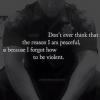
.thumb.png.6e11fc11af5645499ae76cb59fcfb788.png)
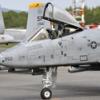


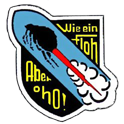

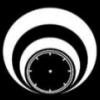
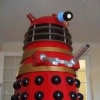


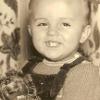
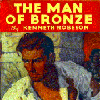

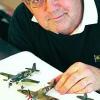
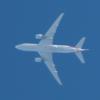
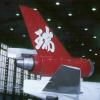
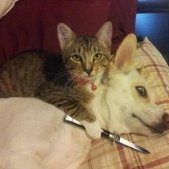

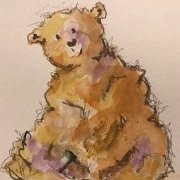
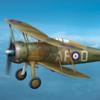

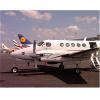
.thumb.jpg.0bac681e0da8e4ed7557610e98fda908.jpg)

